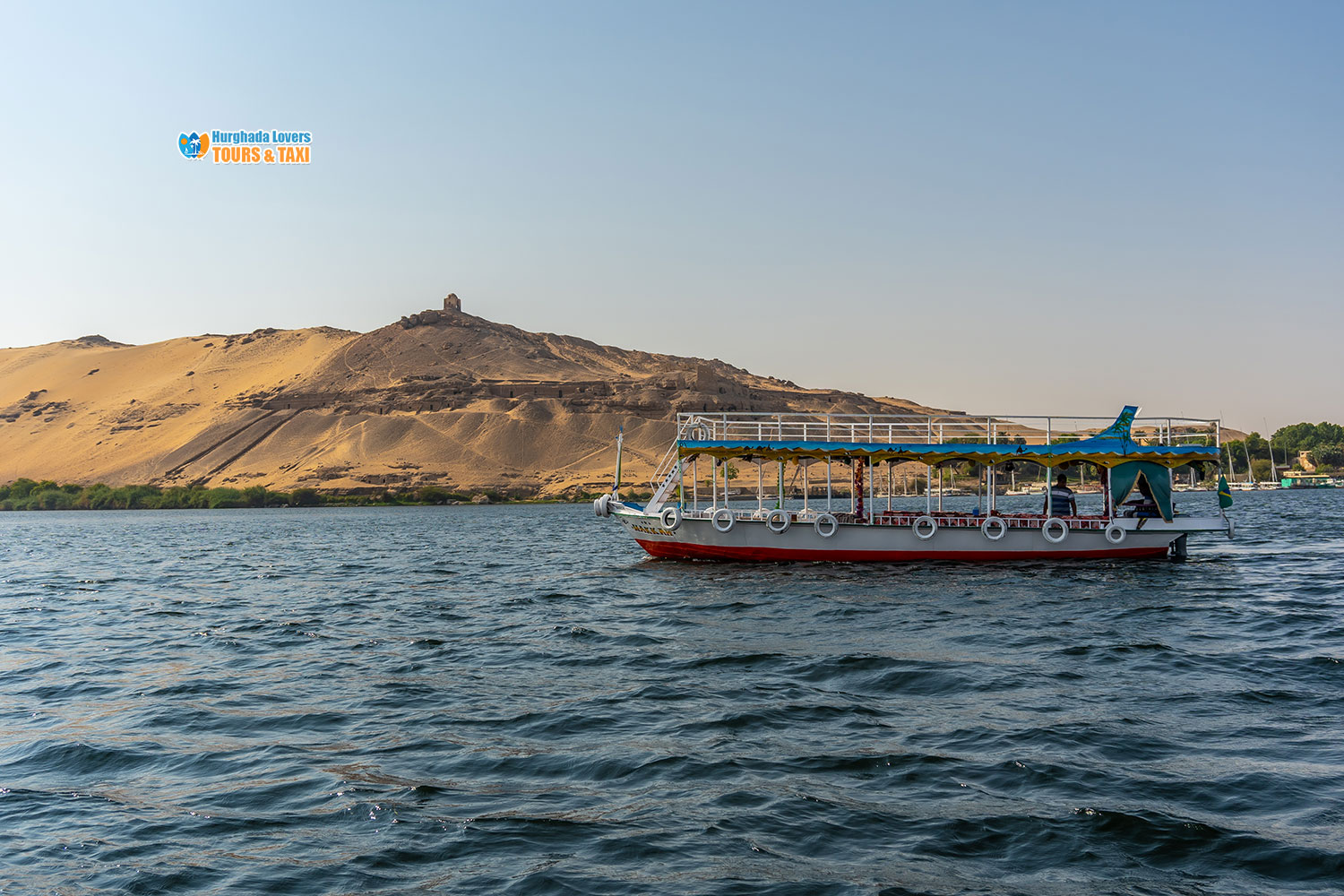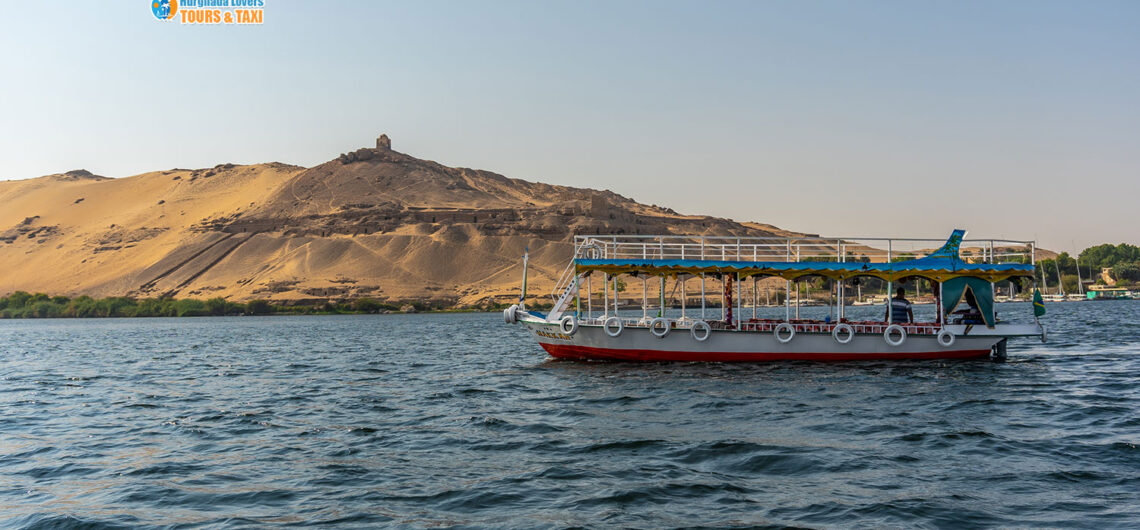Elephantine Island in Aswan, Egypt | Facts history, Map, Why is it called Elephantine island and more.
Facts of the most beautiful islands of the city of Aswan “Seo and Coti”, the history of the most important archaeological pharaonic temples on the island, the museum, dates of the visit and more.
The Nubian villages of Seo and Koti, or the so-called Elephantine Island, are the Nile islands in Aswan. It is one of the islands that contain a large group of monuments and temples, in addition to museums that show us the different eras that passed through Egypt. Learn about these villages more below.
Hurghada lovers Offer Luxury Hurghada to Luxor Tours | El Gouna to Luxor Tours | Makadi bay to Luxor Tours | Sahl Hasheesh to Luxor Tours | Soma bay to Luxor Tours.
How big is Siu and Coty?
The area of the island is 1500 meters long and 500 meters wide.
What is the population of the island?
The population of that island is 5800 people, most of them are Nubians, who are found in abundance in two villages in the center of the island, namely Seo and Koti.
The reason for the name of the Elephantine Island
• In the past, this island was known in the Pharaonic texts as Abu, which means the elephant.
• The reason for calling the island by this name is the presence of a port on the island where the African ivory, which is extracted from the tusks of elephants, is received.
• The name has been translated into Greek, Elephantine, which refers to elephant tusk ivory.
• That island was one of the pivotal trade routes in Egypt, and the island was the main headquarters of many missions, including government, military and commercial as well.
• Another reason for this name is the existence of a similarity between the shape of the island and the elephant’s tusk.
Elephantine Island Museum
• It is also called the Aswan Museum.
• The museum is located in the southeast of the island.
• The museum dates back to 1917 and includes a large collection of Nubian antiquities.
• The museum was discovered by a foreign mission.
• The museum contains antiquities of ancient Pharaonic Egypt, statues of kings and mummies.
• There is the symbol of the god Khnum in addition to other architectural and decorative elements, coffins and funerary paintings as well.
Elephantine Island Aswan
The most important monuments and tourist places in Aswan in Egypt where it includes a large collection of Pharaonic Temples, a museum, the hotel on the island and more.
What to see when visiting the Southern Fortress of Egypt, the most important places, and attractions of the city of Aswan and more details about the dates of visit and valuable information about the island of Aswan.
Elephantine Island was one of the most powerful forts on Egypt’s southern border and is currently located in front of the Cataract Hotel in Aswan, and its idol, the God Khnum or Khnum Ra, was in the form of a ram.
The name Elephantine derives from its ancient Egyptian name, which means land of elephants, and can be interpreted as a center of ivory trade and named in History Of Egyptian (Abou), and it came from Sudan or that the name refers to the elephant that lived in this region in predynastic times.
About the establishment of Elephantine Island in Aswan
” Elephantine ” is the name given by the Greeks to the island located in front of the city of Aswan, one of the largest islands of Aswan, located north of the first waterfall, which took on a long historical significance that began from the pre-dynastic era to Roman times, and this island extends over 1.5 km long and 500 meters wide.
What can you see when you visit Elephantine Island in Aswan?
There are many archaeological sites on Elephantine Island, where prehistoric remains and remnants of pottery and stones have been found on the island, as well as a collection of monuments dating from the Old Kingdom and up to the New Kingdom, including the temples of King Thutmosis III, Amenophis III “Egyptian Pharaohs kings”, the Temple of Khnum, as well as a Greco-Roman cemetery.
Also the most important of the discoveries associated with the island is the discovery of the Aramaic papyrus of Elephantine, and also on Elephantine Island many ruins of the old city, as well as some important monuments found in Elephantine itself and in the vicinity of the city of Aswan.
Other discoveries were made on the island such as the rock-carved tombs on the west bank of the Nile at Aswan, northwest of the island, on a mountain slope now known as the Dome of the Air, which was chosen by the nobles or rulers of the island to be their eternal seat in the other world.
During your visit to Elephantine Island in Aswan, you can see the ruines of stone temples and on the door of one of the rooms of the southern temple shows inscriptions depicting Alexander II as the king of Egypt, presenting offerings to the various gods and his name is written in hieroglyphics.
Elephantine In Aswan:
It is about 2 km long, located in the center of the Nile and was an ancient capital of the rulers of the south since the time of the pharaohs, and the word Elephantine is derived from the word elephant in Greek, where drawings of the elephant trade used in the Pharaonic wars were found.
There are many temples and pharaonic monuments on the island, such as:
- The Roman temple which was built on the ruins of an Egyptian temple from the time of the pharaohs.
- Aswan Archaeological Museum “Museums of Egypt” where the pieces of antiquities found in the city of Aswan are exhibited.
- The temple of Khnum, which dates back to the time of the Old Kingdom.
- Temple of Satet, which dates back to the time of Queen Hatshepsut.
- The triad of the island is formed by Khnum, Satet and Anuket.
- A group of ancient and dilapidated Pharaonic tombs such as the Cemetery of the rams, which contains remnants of the Jewish community that settled at the end of the 26th Pharaonic dynasty.
- The island’s large garden, home to a collection of ornamental plants from around the world, has never been seen before.
Visit Elephantine Island in Aswan:
The island can be visited at any time of the day, but it is best to visit it in the morning to see the effects of the sunlight
Among the scenes that can be seen when you visit the island is also the 7,000-year-old Nilometer, which, before its demolition, was a key factor in determining the taxes that farmers had to pay at the time.
There is also one of the most important rock tombs, which appeared in the Old Kingdom, which were built in the western hills to protect them from thieves.
In total, the island has many archaeological sites, 1,200 meters long from north to south, with a width of about 400 meters, and the island has a large number of beaches that you can enjoy, as well as parks, markets, restaurants and cafes overlooking the Nile.
Aswan Museum entry date
Daily from 9:00 am to 5:00 pm.
Aswan Museum ticket price
The ticket price is 20 pounds for an adult Egyptian and 5 pounds for an Egyptian student.
The ticket price is 140 for an adult foreigner, 70 pounds for a foreign student.
Island temples
• The island contains temples dating back to the Greek era until the early Islamic era.
• There is a temple on the island dating back to the First and Second Dynasties, which dates back to 2800 BC.
• The island includes another temple, dating back to the Sixth Dynasty, which dates back to 2250 BC.
• The third temple was built during the reign of Senusret I, which dates back to 1950 BC.
• Queen Hatshepsut is also one of the kings who built temples on that island, and her museum dates back to 1480 BC.
• There is also a temple to the god Khnum, whose stones were stolen so that only one pillar remained.
• The tomb of rams is located near the temple, and that tomb also belongs to the same deity.
• One of the factors of the importance of that island is the interest of the ancient Egyptians in it, so that the kings of the 26th dynasty made a measure for the Nile.
• The Roman emperors recorded their names on the walls of those temples, and there are inscriptions on the southern temple dating back to Alexander II.


